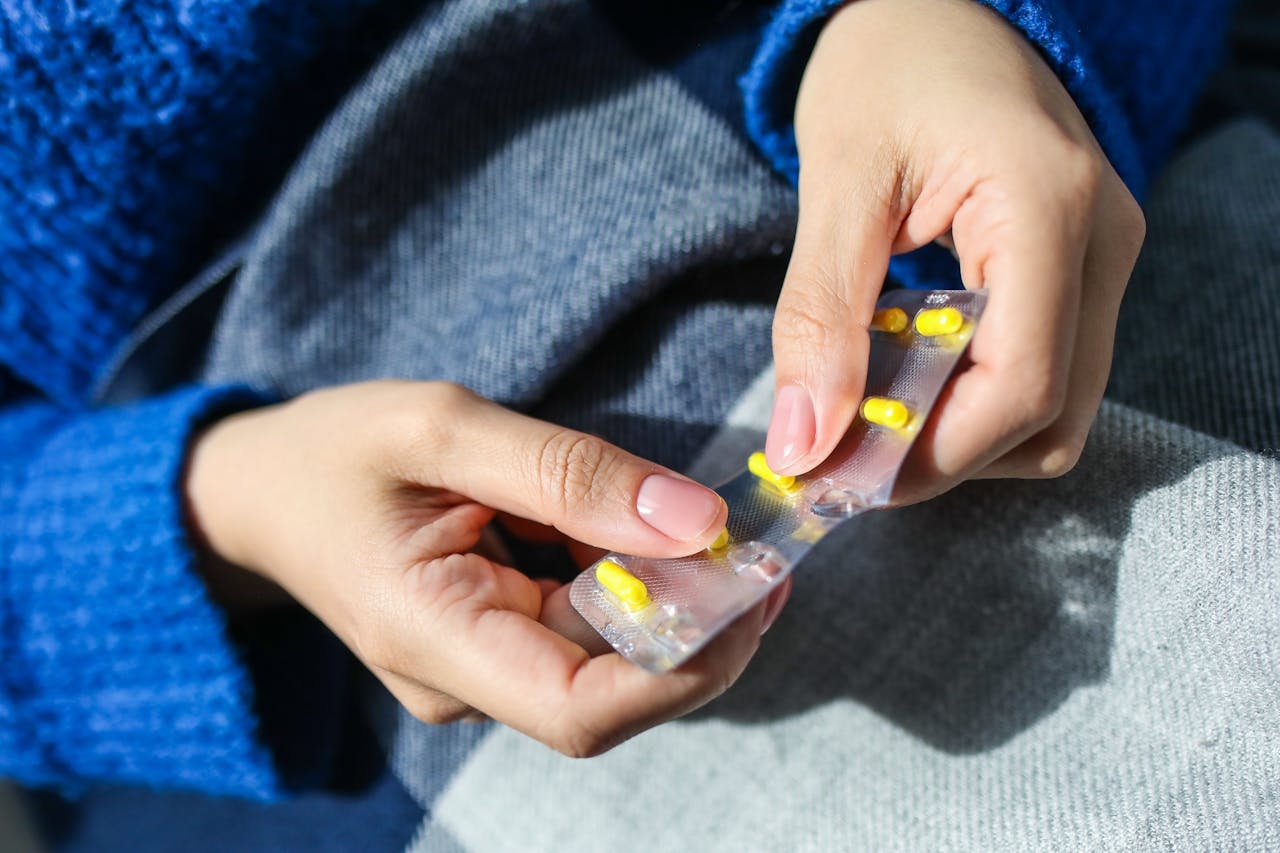
Palmeux 75 mg suspension inyectable de liberacion prolongada en jeringa precargada efg

How to use Palmeux 75 mg suspension inyectable de liberacion prolongada en jeringa precargada efg
Introduction
Prospect: information for the user
Palmeux 25mg injectable suspension with prolonged release in preloaded EFG syringe
Palmeux 50mg injectable suspension with prolonged release in preloaded EFG syringe
Palmeux 75mg injectable suspension with prolonged release in preloaded EFG syringe
Palmeux 100mg injectable suspension with prolonged release in preloaded EFG syringe
Palmeux 150mg injectable suspension with prolonged release in preloaded EFG syringe
Paliperidone
Read this prospect carefully before starting to use this medicine, as it contains important information for you.
- Keep this prospect, as you may need to read it again.
- If you have any questions, consult your doctor, pharmacist, or nurse.
- If you experience any adverse effects, consult your doctor, pharmacist, or nurse, even if they are not listed in this prospect. See section 4.
1. What is Palmeux and for what it is used
2. What you need to know before starting to use Palmeux
3. How to use Palmeux
4. Possible adverse effects
5. Storage of Palmeux
6. Contents of the package and additional information
1. What is Palmeux and what is it used for
This medication contains the active ingredient paliperidone, which belongs to the class of antipsychotic medications and is used as maintenance treatment for symptoms of schizophrenia in adult patients who are stabilized on paliperidone or risperidone.
If you have shown a response to paliperidone or risperidone in the past and have mild or moderate symptoms, your doctor may initiate treatment with Palmeux without prior stabilization on paliperidone or risperidone.
Schizophrenia is a disorder with both "positive" and "negative" symptoms. Positive means an excess of symptoms that are not normally present. For example, a person with schizophrenia may hear voices or see things that do not exist (known as hallucinations), have false beliefs (known as delusions) or have an excessive distrust of others. Negative refers to the lack of behaviors or feelings that are normally present. For example, a person with schizophrenia may withdraw into themselves and not respond to any emotional stimuli or may have difficulty speaking in a clear and logical manner. People who suffer from this disorder may also feel depressed, anxious, guilty, or tense.
This medication may help alleviate symptoms of your condition and prevent them from recurring.
2. What you need to know before starting to use Palmeux
Do not use Palmeux:
- if you are allergic to paliperidone or any of the other components of this medication (listed in section6).
- if you are allergic to any other antipsychotic medication, including risperidone.
Warnings and precautions
Consult your doctor, pharmacist, or nurse before starting to use Palmeux.
This medication has not been studied in elderly patients with dementia. However, elderly patients with dementia who are being treated with similar medications may have an increased risk of stroke or death (see section4, possible side effects).
All medications have side effects, and some of the side effects of this medication may worsen symptoms of other conditions. For this reason, it is essential to discuss with your doctor any of the following diseases, which may worsen during treatment with this medication:
- if you have Parkinson's disease
- if you have ever been diagnosed with a disease whose symptoms include high fever and muscle rigidity (also known as Neuroleptic Malignant Syndrome)
- if you have ever experienced abnormal movements of the tongue or face (Tardive Dyskinesia)
- if you have had low white blood cell counts in the past (which may or may not have been caused by other medications)
- if you are diabetic or have a tendency to develop diabetes
- if you have had breast cancer or a tumor in the pituitary gland of the brain
- if you have any heart disease or if you are receiving treatment for heart diseases that may make you more prone to a drop in blood pressure
- if you have low blood pressure when standing up or getting up quickly
- if you have epilepsy
- if you have kidney problems
- if you have liver problems
- if you have a prolonged and painful erection
- if you have difficulty controlling your body temperature or are feeling overheated
- if you have an abnormally high level of prolactin in your blood or if you have a tumor that may be dependent on prolactin
- if you or a family member has a history of blood clots, as antipsychotics have been associated with the formation of blood clots.
If you have any of these diseases, please consult your doctor as it may be necessary to adjust your dose or keep you under observation for a while.
Because very rarely, patients treated with this medication have had a dangerously low number of a type of white blood cell necessary to fight infections in the blood, your doctor may check your white blood cell count.
Even if you have previously tolerated oral paliperidone or risperidone, rare allergic reactions can occur after receiving Palmeux injections. Seek immediate medical help if you experience a skin rash, swelling of the throat, itching, or breathing problems, as these may be signs of a severe allergic reaction.
This medication may cause you to gain weight. Significant weight gain can negatively affect your health. Your doctor will regularly monitor your weight.
In patients treated with this medication, diabetes mellitus or worsening of pre-existing diabetes mellitus has been observed. Your doctor should check for signs of increased blood sugar. In patients with pre-existing diabetes mellitus, blood sugar should be regularly monitored.
Since this medication can reduce the urge to vomit, there is a possibility that it may mask the normal response of the body to the ingestion of toxic substances or other conditions.
During eye surgery for cataracts, the pupil (the black circle in the middle of the eye) may not dilate as needed. Additionally, the iris (the colored part of the eye) may become flaccid during surgery and this may cause eye damage. If you are planning to have eye surgery, be sure to inform your ophthalmologist that you are using this medication.
Children and adolescents
Do not use this medication in patients under 18years.
Other medications and Palmeux
Inform your doctor if you are using, have used recently, or may need to use any other medication.
Taking this medication with carbamazepine (an antiepileptic and mood stabilizer) may require a change in your dose of this medication.
Since this medication primarily acts on the brain, interaction with other medications that also act on it may cause an exaggeration of side effects, such as drowsiness or other effects on the brain, such as other psychiatric medications, opioids, antihistamines, and sleep medications.
Since this medication can reduce blood pressure, you should be careful if you use this medication with other medications that also reduce blood pressure.
This medication may reduce the effect of medications for Parkinson's disease and restless leg syndrome (e.g., levodopa).
This medication may cause an anomaly in the electrocardiogram (ECG) that shows a prolonged period for an electrical impulse to travel through a certain part of the heart (known as "prolongation of the QT interval"). Other medications that have this effect include some medications used to treat heart rhythm or to treat infections, as well as other antipsychotics.
If you are prone to seizures, this medication may increase your chances of experiencing them. Other medications that have this effect include some medications used to treat depression or to treat infections, as well as other antipsychotics.
Palmeux should be used with caution with medications that increase the activity of the central nervous system (psychoestimulants such as methylphenidate).
Palmeux and alcohol
Alcohol should be avoided.
Pregnancy and breastfeeding
If you are pregnant or breastfeeding, or if you think you may be pregnant, consult your doctor or pharmacist before using this medication. Do not use this medication during pregnancy unless you have discussed it with your doctor. The following symptoms may occur in newborn babies of mothers who have been treated with paliperidone in the last trimester of pregnancy (last three months of pregnancy): tremor, rigidity, and/or muscle weakness, drowsiness, agitation, breathing problems, and difficulty feeding. If your baby develops any of these symptoms, contact your doctor.
This medication may pass from mother to baby through breast milk and may harm the baby. Therefore, do not breastfeed while using this medication.
Driving and operating machinery
During treatment with this medication, dizziness, extreme fatigue, and vision problems (see section4) may occur. This should be taken into account when requiring maximum alertness, for example, when driving or operating machinery.
Palmeux contains sodium
This medication contains less than 1mmol of sodium (23mg) per dose; this is essentially "sodium-free."
.
3. How to use Palmeux.
Your doctor or another healthcare professional will administer this medication. Your doctor will inform you when to receive the next injection. It is essential that you do not miss any scheduled doses. If you cannot attend your appointment with the doctor, please make sure to call them immediately to schedule another appointment as soon as possible.
You will receive the first injection (150 mg) and the second injection (100 mg) of this medication in the upper arm approximately one week apart. From then on, you will receive an injection (between 25 mg and 150 mg) in the upper arm or buttocks once a month.
If your doctor is switching you from long-acting risperidone injectable to this medication, you will receive the first injection of this medication (between 25 mg and 150 mg) in the upper arm or buttocks at the next scheduled injection. From then on, you will receive an injection (between 25 mg and 150 mg) in the upper arm or buttocks once a month.
Your doctor may increase or decrease the amount of medication you receive at the time of the scheduled monthly injection based on your symptoms.
Patients with kidney problems
Your doctor may adjust the dose of this medication according to your renal function. If you have mild kidney problems, your doctor may give you a lower dose. You should not use this medication if you have moderate or severe kidney problems.
Patients of advanced age
Your doctor may reduce the dose of this medication if your kidney function is decreased.
If you receive more Palmeux than you should
You will receive this medication under medical supervision, so it is unlikely that you will receive an excessive dose.
Patients who have received an excessive amount of paliperidone may experience the following symptoms: drowsiness or sedation, rapid heart rate, low blood pressure, electrocardiogram abnormalities (heart tracing), or slow or abnormal movements of the face, body, arms, or legs.
In case of overdose or accidental ingestion, please consult your doctor or pharmacist immediately or call the Toxicological Information Service at 91 562 04 20, indicating the medication and the amount ingested.
If you interrupt treatment with Palmeux
If you stop receiving your injections, the effects of the medication will be lost. Do not stop using this medication unless your doctor tells you to, as your symptoms may return.
If you have any other questions about the use of this medication, ask your doctor or pharmacist.
4. Possible Adverse Effects
Like all medicines, this medicine can cause side effects, although not everyone will experience them.
Inform your doctor immediately if:
- You develop blood clots in the veins, especially in the legs (symptoms include inflammation, pain, and redness in the leg), which can travel through the blood vessels to the lungs causing chest pain and difficulty breathing. If you notice any of these symptoms, seek medical advice immediately.
- You have dementia and experience a sudden change in your mental state or sudden weakness or numbness in the face, arms, or legs, especially on one side, or have trouble speaking, even for a short period of time. These may be signs of a stroke.
- You develop fever, muscle stiffness, sweating, or a decrease in consciousness (a condition known as "Neuroleptic Malignant Syndrome"). You may need immediate medical treatment.
- You are a man and experience a prolonged or painful erection. This is known as priapism. You may need immediate medical treatment.
- You experience involuntary rhythmic movements of the tongue, mouth, and face. You may need the withdrawal of paliperidone.
- You experience a severe allergic reaction characterized by fever, swelling of the mouth, face, lips, or tongue, difficulty breathing, hives, skin rash, and sometimes a decrease in blood pressure (i.e., anaphylactic reaction). Even if you have previously tolerated oral risperidone or paliperidone, in rare cases, allergic reactions have occurred after receiving paliperidone injections.
- You are scheduled to undergo eye surgery, ensure that you tell your ophthalmologist that you are taking this medicine. During eye surgery for cataracts, it is possible that the iris (the colored part of the eye) will be flaccid during surgery (known as "floppy iris syndrome"), which can cause eye damage.
- You experience a dangerously low number of a type of white blood cell necessary to fight blood infections.
The following side effects may occur:
Very common side effects: can affect more than 1 in 10 patientspatients
- Difficulty staying or falling asleep.
Common side effects: can affect up to 1 in 10 patientspatients
- Common cold symptoms, urinary tract infection, feeling like having the flu.
- Palmeux may increase levels of a hormone called "prolactin" that is detected in blood tests (which may or may not cause symptoms). When prolactin symptoms appear, they may include (in men) breast swelling, difficulty getting or maintaining erections, or other sexual dysfunction; (in women) breast discomfort, milk secretion, missed periods, or other menstrual cycle problems.
- Increased blood sugar, weight gain, weight loss, decreased appetite.
- Irritability, depression, anxiety.
- Parkinsonism: This disease may include slow or altered movement, a sensation of stiffness or tension in the muscles (making sudden movements) and sometimes a sensation of "freezing" of movement that is then restarted. Other signs of parkinsonism include walking slowly dragging the feet, trembling while resting, increased saliva and/or drooling, and loss of facial expression.
- Restlessness, feeling drowsy or less attentive.
- Dystonia: This is a disorder that involves involuntary slow or continuous muscle contraction. Although it can affect any part of the body (and may cause abnormal postures), dystonia often affects the facial muscles, including abnormal movements of the eyes, mouth, tongue, or jaw.
- Dizziness.
- Discinesia: This disorder involves involuntary muscle movements and may include repetitive, spasmodic, or twisting movements, or spasms.
- Trembling (agitation).
- Headache.
- Fast heart rate.
- Increased blood pressure.
- Cough, nasal congestion.
- Abdominal pain, vomiting, nausea, constipation, diarrhea, indigestion, toothache.
- Increased liver enzymes in the blood.
- Muscle or bone pain, back pain, joint pain.
- Amenorrhea (absence of menstruation).
- Milk secretion from the breasts.
- Fever, weakness, fatigue (tiredness).
- A reaction at the injection site, including itching, pain, or swelling.
Uncommon side effects: can affect up to 1 in 100 patientspatients
- Pneumonia, chest infection (bronchitis), respiratory tract infection, nasal infection, urinary tract infection, ear infection, fungal nail infection, tonsillitis, skin infection.
- Decreased white blood cell count, decreased type of white blood cell that helps fight blood infections, decreased platelets (blood cells that help stop bleeding), anemia.
- Allergic reaction.
- Diabetes or worsening of diabetes, increased insulin (a hormone that controls blood sugar levels) in the blood.
- Increased appetite.
- Loss of appetite that causes malnutrition and weight loss.
- Increased triglycerides in the blood (fat), increased cholesterol in the blood.
- Sleep disorder, euphoria (mania), decreased sex drive, nervousness, nightmares.
- Tardive dyskinesia (involuntary spasms or movements that cannot be controlled in the face, tongue, or other parts of the body). Inform your doctor immediately if you experience involuntary rhythmic movements of the tongue, mouth, or face. You may need the withdrawal of this medicine.
- Dizziness, restlessness that causes movement of body parts, dizziness when standing up, altered attention, speech problems, loss or alteration of taste, decreased skin sensitivity to pain or touch, sensation of pins and needles, or numbness of the skin.
- Blurred vision, eye infection, or "red eye," dry eyes.
- Sensation of spinning (vertigo), ringing in the ears, ear pain.
- Abnormal heart rhythm, irregular heart rhythm.
- Blood clots in the veins, especially in the legs (symptoms include swelling, pain, and redness in the leg). If you experience any of these symptoms, seek medical advice immediately.
- Flush.
- Difficulty breathing during sleep (sleep apnea).
- Pulmonary congestion.
- Crackling sounds from the lungs.
- Pancreatitis, tongue swelling, fecal incontinence, hard stools.
- Cracked lips.
- Medication-related skin rash, skin thickening, dandruff.
- Muscle fiber rupture and muscle pain (rhabdomyolysis).
- Joint swelling.
- Inability to urinate.
- Mammary discomfort, breast gland growth, breast growth.
- Vaginal discharge.
- Very low body temperature, chills, sensation of thirst.
- Medication withdrawal symptoms.
- Accumulation of pus due to skin infection at the injection site, deep skin infection, injection site abscess, bruising at the injection site.
Unknown frequency: cannot be estimated from available data
- Dangerously low number of a type of white blood cell necessary to fight infections.
- Severe allergic reaction characterized by fever, swelling of the mouth, face, lips, or tongue, difficulty breathing, hives, skin rash, and sometimes a decrease in blood pressure.
- Excessive water intake.
- Medication-related eating disorder.
- Coma due to uncontrolled diabetes.
- Head agitation.
- Blood clots in the lungs causing chest pain and difficulty breathing. If you experience any of these symptoms, seek medical advice immediately.
- Decreased oxygen in parts of the body (due to decreased blood flow).
- Fast, shallow breathing, pneumonia caused by food aspiration, voice disorder.
- Intestinal obstruction, absence of intestinal movement causing obstruction.
- Yellow skin and eyes (jaundice).
- Severe or life-threatening skin rash with blisters and peeling of the skin that may start in the mouth, nose, eyes, and genitals and spread to other parts of the body (Stevens-Johnson syndrome or toxic epidermal necrolysis).
- Severe allergic reaction with swelling that may affect the throat, causing difficulty breathing.
- Decoloration of the skin, scaly skin with itching.
- Abnormal posture.
- Newborn babies of mothers who have been treated with Palmeux during pregnancy may experience medication side effects and/or withdrawal symptoms, such as irritability, weak or sustained muscle contractions, agitation, drowsiness, breathing problems, or difficulty feeding.
- Priapism (prolonged erection that may require surgical treatment).
- Decreased body temperature.
Dead skin cells at the injection site and ulcer at the injection site.
Reporting side effects
If you experience any type of side effect, consult your doctor, pharmacist, or nurse.Even if it is a possible side effect that does not appear in this prospectus.You can also report them directly through the Spanish System for Pharmacovigilance of Medicines for Human Use: www.notificaRAM.esBy reporting side effects, you can contribute to providing more information on the safety of this medicine.
5. Palmeux Conservation
Keep this medication out of the sight and reach of children.
Do not use this medication after the expiration date that appears on the box and on the preloaded syringe after CAD. The expiration date is the last day of the month indicated.
Do not store at a temperature above 86°F (30°C).
Medicines should not be disposed of through drains or in the trash. Dispose of the containers and medicines you no longer need at the SIGRE point of your pharmacy. If in doubt, ask your pharmacist how to dispose of the containers and medicines you no longer need. By doing so, you will help protect the environment.
6. Contents of the packaging and additional information
Composition of Palmeux
The active principle is paliperidone.
Each pre-filled syringe of Palmeux 25 mg contains 25 mg of paliperidone (as palmitate).
Each pre-filled syringe of Palmeux 50 mg contains 50 mg of paliperidone (as palmitate).
Each pre-filled syringe of Palmeux 75 mg contains 75 mg of paliperidone (as palmitate).
Each pre-filled syringe of Palmeux 100 mg contains 100 mg of paliperidone (as palmitate).
Each pre-filled syringe of Palmeux 150 mg contains 150 mg of paliperidone (as palmitate).
The other components are:
Polisorbato 20
Macrogol
Citric acid monohydrate
Anhydrous sodium phosphate
Monohydrate dihydrogen phosphate of sodium
Sodium hydroxide (for pH adjustment)
Water for injection
Appearance of the product and contents of the package
Palmeux is a white to off-white prolonged-release injectable suspension that comes in a pre-filled syringe.
Each package contains 1 pre-filled syringe and 2 safety needles.
Marketing Authorization Holder
Amdipharm Limited
3 Burlington Road
D04 RD68 Dublin 4,
Ireland
Responsible for manufacturing
Pharmathen S.A
Dervenakion 6,
Pallini Attiki, 15351,
Greece
Ó
Pharmathen International S.A
Industrial Park Sapes,
Rodopi Prefecture, Block No 5,
Rodopi 69300,
Greece
Local Representative:
Advanz Pharma Spain S.L.U.
Paseo de la Castellana 135, 7ª
28046 Madrid (Spain)
Tel: +34 900 834 889
medicalinformation@advanzpharma.com
Last review date of this leaflet:September 2021.
Detailed and updated information on this medicine is available on the website of the Spanish Agency for Medicines and Medical Devices (AEMPS)http://www.aemps.gob.es/
------------------------------------------------------------------------------------------------------------------------
This information is intended solely for medical professionals or healthcare professionals and should be read in conjunction with the complete prescribing information (Summary of Product Characteristics).
The injectable suspension is for single use only. It should be visually inspected to detect any foreign particles before administration. Do not use the product if the syringe is not visually free of foreign particles.
The package contains a pre-filled syringe and two safety needles (one 22-gauge 1½-inch needle and one 23-gauge 1-inch needle) for intramuscular injection
- Shake the syringe vigorously for at least 10 seconds to ensure a homogeneous suspension.
2.Choose the appropriate needle.
The initial dose of Palmeux (150 mg) is administered on Day 1 in the deltoid muscle using the deltoid needle. The second initial dose of Palmeux (100 mg) is administered in the deltoid muscle one week later (Day 8) using the deltoid needle.
If the patient is switched from risperidone prolonged-release injectable to Palmeux, the first Palmeux injection (dose range 25 mg to 150 mg) can be administered in the deltoid muscle or gluteus muscle using the appropriate needle for the injection site at the time of the next scheduled injection.
Subsequent monthly maintenance injections can be administered in both the deltoid muscle and gluteus muscle using the appropriate needle for the injection site.
In the case of deltoid injection, if the patient weighs <90 kg, use the 23-gauge 1-inch needle (25.4 mm x 0.64 mm) (needle with blue hub); if patient weighs ≥ 90 22-gauge 1½-inch (38.1 0.72 grey hub).< span>
In the case of gluteus injection, use the 22-gauge 1½-inch needle (38.1 mm x 0.72 mm) (needle with grey hub).
3.While holding the syringe in a vertical position, remove the rubber cap from the tip with a twisting motion.
4.Open the blister pack of the safety needle to the middle. Hold the needle cover by the plastic paper of the blister pack that has just been opened. Attach the safety needle to the Luer connection of the syringe with a simple twisting motion in a clockwise direction.
5.Remove the cover from the needle by pulling it straight off, following a straight line. Do not twist the cover, as the needle may come loose from the syringe.
6.Place the syringe with the needle in a vertical position to proceed with the removal of air. Remove the air from the syringe by gently pushing the plunger forward.
7.Inject the entire contents slowly and deeply into the selected deltoid or gluteus muscle of the patient. Do not administer by intravascular or subcutaneous route.
8.Once the injection is complete, use your finger or another finger of your hand (8a, 8b) or a flat surface (8c) to activate the needle protection system. The system is fully activated when you hear a click. Dispose of the syringe with the needle properly.
8a
8b
8c

How much does Palmeux 75 mg suspension inyectable de liberacion prolongada en jeringa precargada efg cost in Spain ( 2025)?
The average price of Palmeux 75 mg suspension inyectable de liberacion prolongada en jeringa precargada efg in September, 2025 is around 152.41 EUR. Prices may vary depending on the region, pharmacy, and whether a prescription is required. Always check with a local pharmacy or online source for the most accurate information.
- Country of registration
- Average pharmacy price152.41 EUR
- Active substance
- Prescription requiredYes
- Manufacturer
- CompositionHidrogeno fosfato de disodio anhidro (3,7 mg mg), Dihidrogenofosfato de sodio monohidrato (1,9 mg mg), Hidroxido de sodio (e 524) (7 pH mg)
- This information is for reference only and does not constitute medical advice. Always consult a licensed doctor before taking any medication. Oladoctor is not responsible for medical decisions based on this content.
Ask a doctor about Palmeux 75 mg suspension inyectable de liberacion prolongada en jeringa precargada efg online
Talk to a doctor online
Need help understanding this medicine or your symptoms? Online doctors can answer your questions and offer guidance.















